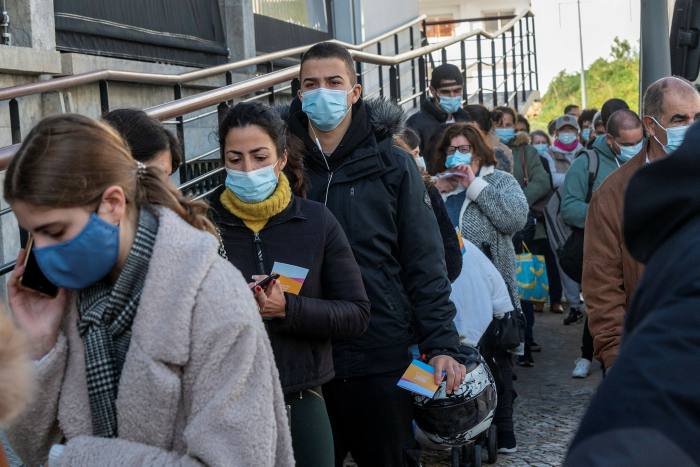
As a weary world faces a third year of coronavirus, just as its spread is supercharged by the most infectious variant so far, there is optimism among many scientists that the pandemic’s toll on global health will ease in 2022.
Although Omicron threatens a crisis over the next few months, the most likely scenarios show a much improved outlook after that due to increasing immunity among the global population, through vaccination and natural infection, which is likely to make the consequences of the virus less severe.
“The upswing in Omicron cases in Europe and North America has been extremely fast and we may see an equally fast downswing over the next month or two, though it could take four to six months for the variant to reverberate right round the world,” said Jeremy Farrar, director of the Wellcome medical foundation.
“Then the immunity that’s been built up is likely to give us a period of calm, but there are a number of ways this could play out.”
Tim Colbourn, professor at University College London, said it was “entirely reasonable to think that the burden of Covid can be reduced by 95 per cent in 2022, so that it’s no longer a top 10 health problem. That would be a reasonable goal to end the pandemic.”
Some experts view Omicron itself as a pointer to future evolution of the Sars-Cov-2 virus, as natural selection favours mutations that pass as quickly and efficiently as possible between people who already have some immune protection.
Laboratory tests show that the mutations in Omicron have made it much more infectious than previous variants in the nasal and upper respiratory passages — favouring rapid transmission — but conversely less likely to penetrate deep into the lungs where it tends to do most damage.
These conclusions are supported by epidemiological evidence that the risk of severe disease is reduced by half or more with Omicron.
“But this massive surge of infections and cases will translate into a smaller surge in hospitalisations than either the Delta wave or the peak last winter at the global level,” said Chris Murray, the institute’s director.
Evidence so far suggests Omicron will displace Delta as the variant circulating in most parts of the world, just as Delta swept away previous strains. “I’m reassured by that prospect,” said Farrar.
“I’d be more worried if you had different variants circulating at the same time, because that would mean they were exploiting different ecological niches, and we’d end up with a potentially dangerous dynamic of multiple strains interacting.”

Even if Omicron does become the dominant strain, another variant of the virus is a certainty.
While individual changes to the genetic code are random events during viral replications — and no one foresaw the multiplicity of mutations that characterise Omicron — the environmental pressures that allow some to thrive are predictable.
“Although you can imagine a deadly new variant emerging that’s more transmissible but also more harmful . . . I don’t know how feasible that would be for this virus,” said Jennifer Rohn, a cell biologist and UCL professor. “Sars-Cov-2 depends on infecting cells and it may already be close to the limits of its repertoire.”
Whether new pathogens generally tend to become milder over time as they become established in human populations is a matter of debate among scientists. But Paul Hunter, professor of medicine at the University of East Anglia, is convinced it is true of coronaviruses.
Four human coronaviruses, which have long circulated worldwide causing mild to moderate cold-like symptoms, may have caused serious epidemics when they first moved from animals into people.
In particular the most recent arrival, OC43, crossed over from cattle around 1889 and caused the pandemic then called “Russian flu”, Hunter believes, causing increasingly mild waves of Covid-like illness for four or five years — though not everyone is convinced by the evidence.
That reassuring scenario may apply if Sars-Cov-2 evolves in an essentially linear fashion. However, there is a small risk of a sudden evolutionary jump to “something out of left-field that does not come from existing lineages”, Farrar pointed out.
One possibility is Sars-Cov-2 evolving in an animal population and then moving back into people. Influenza pandemics usually begin with a flu virus jumping from birds or pigs.
Or Sars-Cov-2 could swap genes with a different virus through a “genetic recombination”. If for example someone was infected simultaneously with Sars-Cov-2 and the related Mers coronavirus, which does not transmit readily between people but kills about 40 per cent of those who are infected, it is possible to imagine a nightmare hybrid arising that combined transmissibility and lethality.
Although such an evolutionary leap is not impossible, most experts regard it as extremely unlikely. “I’m much more scared of another pandemic caused by a new virus that we don’t yet know about than by some variant of Sars-Cov-2,” Colbourn said.




















